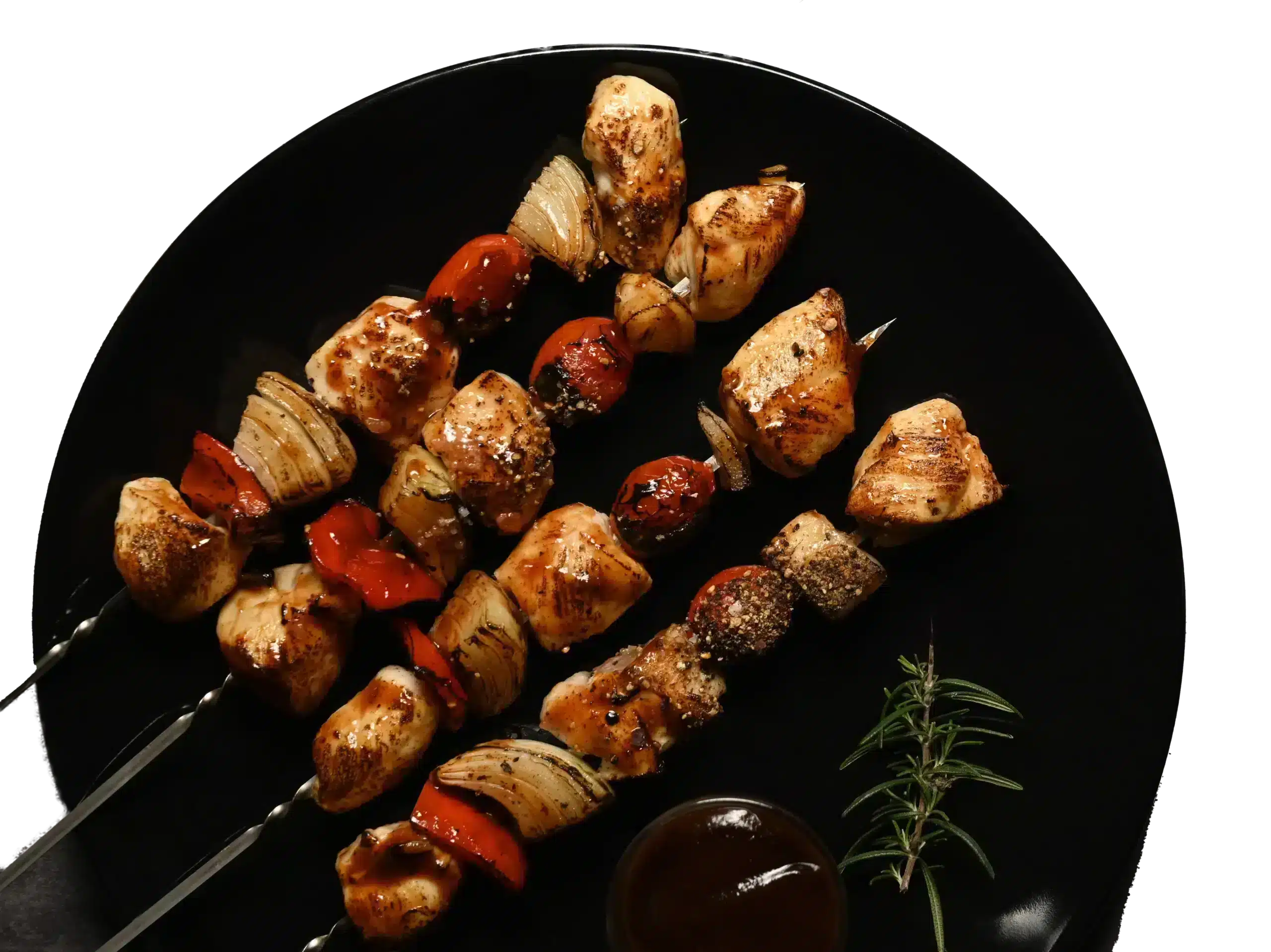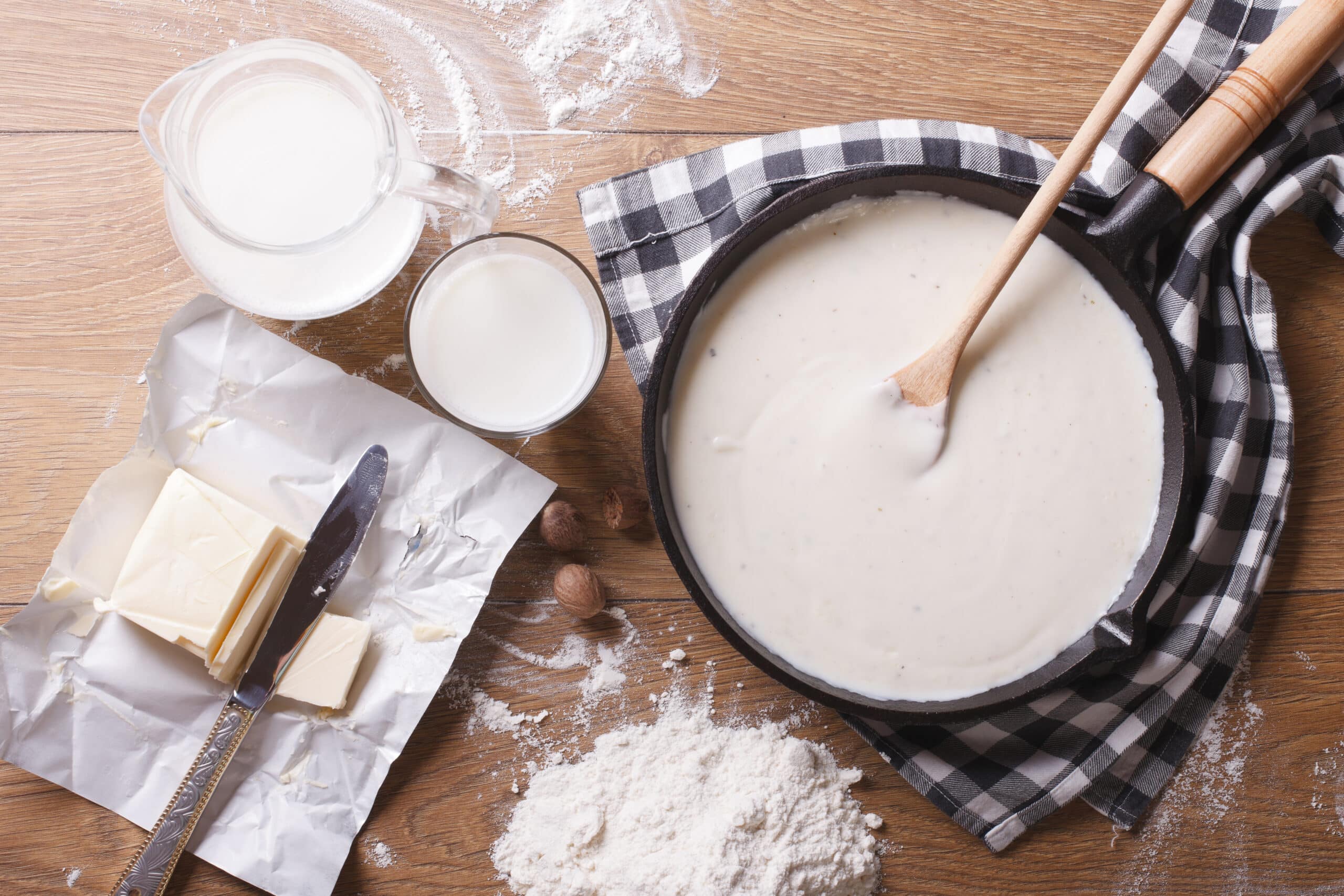
Mastering the 5 Mother Sauces is essential for anyone looking to delve into the intricacies of French cuisine. These foundational sauces – béchamel, espagnole, hollandaise, tomato, and velouté – are the backbone for countless dishes, each boasting unique flavors and textures. With a firm understanding of these sauces, any aspiring chef or home cook can elevate their culinary creations to new heights.
The sauces vary in their main ingredients and thickening agents, providing diverse flavor profiles to build upon. Though typically not consumed in their original state, these essential sauces can be transformed into a multitude of secondary sauces through the addition of herbs, spices, or other ingredients. By mastering these sauces, you acquire the ability to create delectable dishes with rich and complex flavors.
Not only do the sauces serve as a cornerstone for French cuisine, but they also influence various other types of cooking. Acquiring the skill to prepare each sauce empowers cooks to broaden their culinary horizons and create delicacies across different food cultures. Let’s explore the techniques and ingredients needed to perfect each of the 5 Mother Sauces, enabling you to become an adept and versatile cook.
Béchamel sauce, also known as white sauce, is a simple yet essential mother sauce in French cuisine. It is made by combining a white roux (a mixture of butter and flour) with milk and is often flavored with onion, shallots, pepper, or nutmeg. Béchamel is the base for several secondary sauces, such as cheddar cheese sauce, cheese sauce, cream sauces, or Mornay sauce.
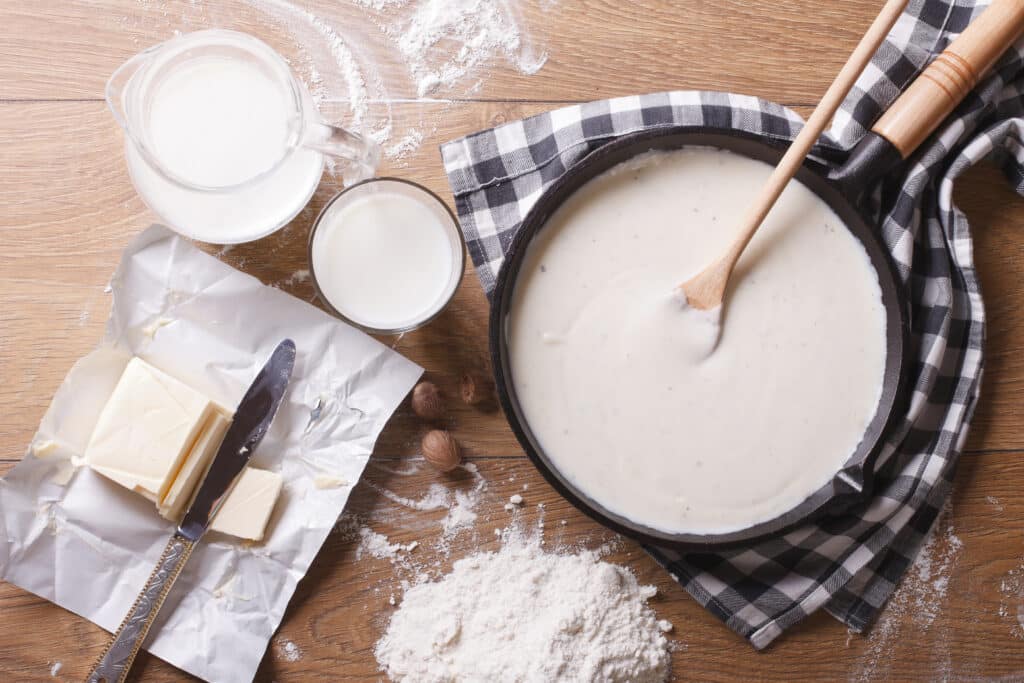
Velouté is another dairy-free mother sauce that is similar to béchamel. Instead of milk, this sauce is made by mixing a roux with a light stock, such as chicken, fish, or vegetable. Velouté is not commonly used as a topping sauce on its own, but it serves as the foundation for many soups and sauces, like the sauce found in Swedish meatballs.

Espagnole sauce is a rich and flavorful brown sauce made by combining a brown roux with beef or veal stock. Its complex flavor profile includes ingredients like tomato paste, mirepoix (a mix of diced carrots, onions, and celery), and various herbs and spices. Espagnole sauce is the base for several small sauces, such as bordelaise, mushroom, and demi-glace.

Hollandaise sauce is an emulsified sauce made by whisking egg yolks, melted butter, and lemon juice together over gentle heat until thickened. This smooth and creamy sauce requires skill and patience to prepare, as the mixture can easily separate or curdle if not handled correctly. Hollandaise is a popular accompaniment for poached eggs, vegetables, and fish dishes.

Tomato sauce is another versatile mother sauce used in countless dishes, from pasta to stews. This sauce is made by simmering tomatoes, onions, garlic, and various herbs and seasonings together until thick and flavorful. The blend of fresh flavors and acidity in tomato sauce makes it a popular ingredient in many international cuisines.

By mastering these five mother sauces, one can use them as a foundation to create a wide variety of dishes and elevate their cooking skills.
The concept of the five mother sauces originated in French cuisine and can be traced back to the early 19th century. These sauces were first set forth by Marie Antoine-Carême, often considered the founder of classical French cooking. He devised a classification system for sauces based on their ingredients and methods of preparation, laying the groundwork for modern sauce-making. Later, in the late 19th century, French chef Auguste Escoffier further refined and adapted Carême’s sauce system, establishing the five mother sauces we recognize today.

Three of the five mother sauces in French cuisine are based on roux, which is a mixture of equal parts fat and flour cooked together to create a thickening agent. These sauces are Béchamel, Velouté, and Espagnole.
Béchamel: Often used in dishes like Fettucine Alfredo, lasagna, or chicken pot pie. To make Béchamel, gently heat the milk or cream in a separate pan while preparing the roux in another. Slowly whisk the warm milk or cream into the roux until the desired thickness is achieved (source).

Velouté: This sauce is similar to Béchamel in that it also starts with a roux, but it uses a light stock (such as chicken, fish, or veal) instead of milk or cream to create a smooth, velvety texture. To make Velouté, follow the same process as Béchamel, but substitute the milk or cream with the chosen stock (source).

Espagnole: This brown sauce is made by combining roux with a rich, dark stock (usually beef or veal) and tomato paste. Aromatics such as onions, carrots, and celery are often added for depth of flavor. To make Espagnole, first cook the vegetables in the fat before adding the flour to create the roux. Then, whisk in the stock and tomato paste and allow the sauce to simmer and thicken (source).
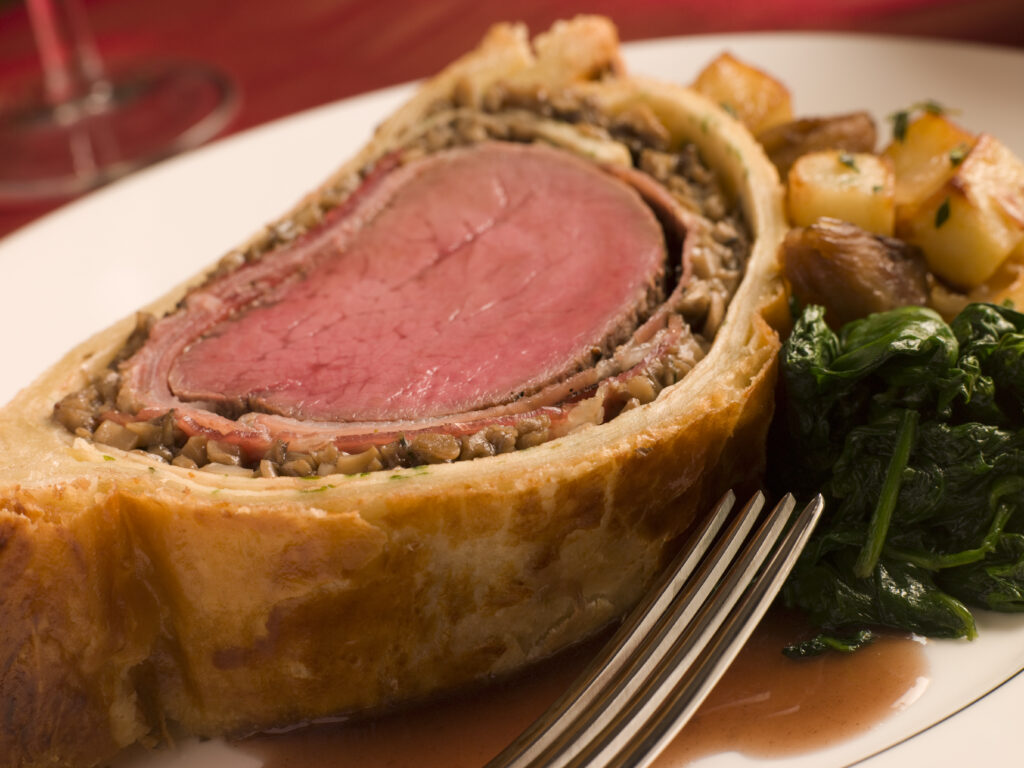
Two of the five mother sauces are emulsions created by mixing two immiscible liquids, such as oil and water, into a stable, homogenous mixture. These sauces are Hollandaise and Mayonnaise (a variation of the traditional mother sauce Sauce Vinaigrette).
Hollandaise: This sauce is made by combining egg yolks, melted butter, and lemon juice or vinegar. It is typically served over vegetables, fish, or eggs Benedict. To make Hollandaise, whisk the egg yolks and lemon juice or vinegar together in a heatproof bowl, then place the bowl over a pot of simmering water to create a double boiler. Slowly drizzle in the melted butter while continuing to whisk until the sauce is thick and creamy. Be careful not to overheat the sauce, as this can cause it to separate (source).

Mayonnaise: This cold emulsion sauce is made by combining egg yolks, oil, and an acid, such as vinegar or lemon juice. It is commonly used as a base for many dressings and spreads. To make Mayonnaise, whisk the egg yolks together with the acid in a mixing bowl. Slowly drizzle in the oil while continuously whisking until the mixture is thick and emulsified (source).
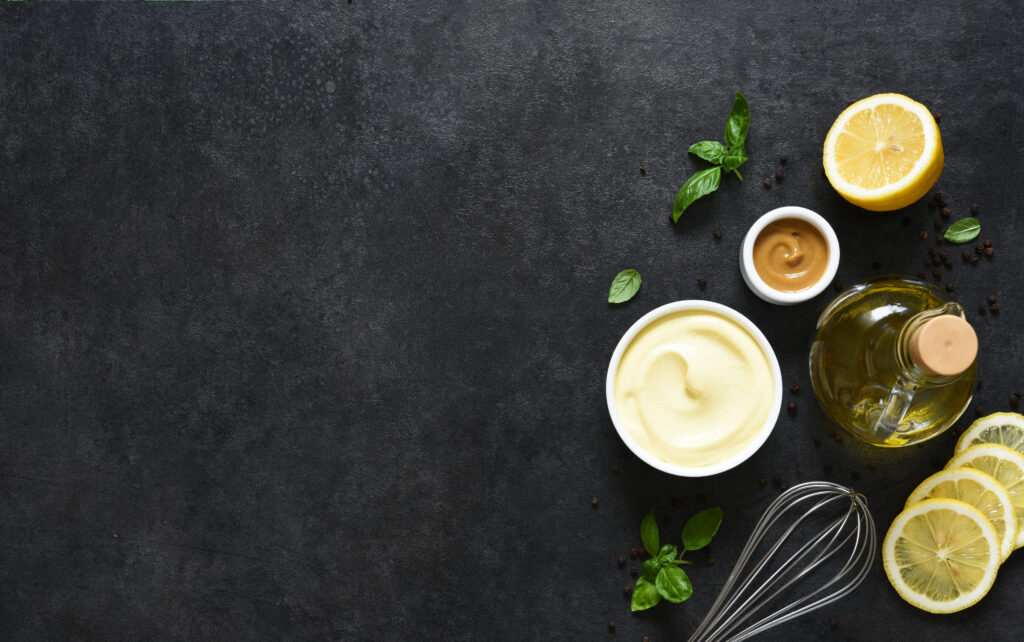
The five mother sauces form the foundation of French cuisine and serve as the starting point for creating various secondary sauces. These mother sauces include béchamel, espagnole, hollandaise, tomato, and velouté. Each sauce has its own set of common variations and derivative sauces.
Béchamel, or white sauce, consists of milk thickened with a roux (a mixture of butter and flour). Its derivatives include:
The second mother sauce, espagnole, is a rich brown sauce with brown stock (veal, beef, or chicken), tomatoes, and a dark roux. Some popular derivatives are:
Hollandaise is a creamy, rich sauce with egg yolks, clarified butter, and lemon juice or vinegar. Some variations include:
The fourth mother sauce, tomato sauce, originates from a simple sauce made with tomatoes, fresh herbs, and sometimes meat. Its variations include:
Finally, velouté is a white sauce made by thickening a light chicken, fish, or veal stock with a roux. Some of its derivatives are:
These variations and derivative sauces enrich the world of French cuisine, providing chefs with countless possibilities to bring complex flavors and creativity to their dishes. Understanding the base mother sauces is crucial for mastering French cooking techniques, and from there, the opportunities to explore and experiment are endless.
Preparation is key. Gather all your ingredients and tools before you start cooking. Measure everything accurately, and ensure all items are easily accessible. Being organized will result in smoother sauce-making.

When making a roux, which is the base for many sauces, ensure the mixture of butter and flour is cooked evenly. Keep stirring the roux so it doesn’t become clumpy or burnt. The roux is the foundation, and if it is not prepared correctly, it will affect the final sauce’s consistency and flavor.
Temperature control is crucial when making sauces. Ensure the liquids are warmed or cooled according to the recipe instructions. For example, when making a béchamel sauce, warm the milk before adding it to the roux to prevent lumps from forming.
When making an emulsion-based sauce like hollandaise, be mindful not to overheat the mixture as it might curdle, and remember to add the ingredients in a slow, steady stream while whisking constantly.
Use a mesh strainer to remove any residual bits to prevent lumps in sauces and ensure a smooth texture. Alternatively, you can use a blender or immersion blender to achieve desired smoothness.
Lastly, always taste your sauces and adjust the seasoning accordingly. Finding the right balance of flavors is important to enhance the dish you are serving with the sauce.
The key ingredients for the five mother sauces are butter, flour, milk (for Béchamel), stock (for Velouté and Espagnole), tomatoes (for Tomato sauce), and eggs and butter (for Hollandaise) source. Additionally, each sauce often contains specific flavorings or additions, like onion, shallots, pepper, nutmeg, and various herbs.
Bechamel sauce, also known as white sauce, is made using milk as a base and is thickened with a white roux. To make Bechamel sauce, melt butter in a saucepan over medium heat, then whisk in an equal amount of flour. Cook this mixture for a few minutes until a paste forms. Gradually add milk while continually whisking to prevent lumps. Bring the mixture to a simmer, then cook until the sauce thickens. Season with salt, pepper, and nutmeg.
Veloute sauce uses stock (usually chicken, fish, or veal) as a base and is thickened with a blond roux. To prepare Veloute, create a blond roux by melting butter in a saucepan and whisking in an equal amount of flour. Cook the roux until it turns a pale golden color, ensuring it doesn’t brown. Gradually add the warmed stock while whisking to prevent lumps. Simmer the mixture, whisking occasionally, until the sauce thickens and becomes smooth. Season the sauce with salt and pepper.
Espagnole sauce is a brown sauce made using a dark roux and brown stock, typically from beef bones. Start by sautéing mirepoix (a mix of diced onions, carrots, and celery) in butter until browned. Add tomato paste to the mirepoix and cook for a few minutes. In another saucepan, prepare a dark roux by following the same process as creating a white roux but cook it longer until it reaches a deep brown color. Combine the roux with the mirepoix mixture, then gradually whisk in warmed brown stock. Simmer the sauce, allowing it to reduce and thicken. Finally, strain the sauce through a fine sieve to remove solids.
Hollandaise sauce is an emulsion of egg yolks, melted butter, and lemon juice. To make Hollandaise sauce, whisk egg yolks and lemon juice in a heatproof bowl until smooth. Place the bowl over a saucepan of simmering water, ensuring the water doesn’t touch the bottom of the bowl, to create a double boiler. Whisk the mixture constantly while gradually adding melted butter in a thin stream. Continue whisking until the sauce thickens and becomes smooth. Season with salt, pepper, and additional lemon juice if desired.
Tomato sauce is made using tomatoes, often in the form of a puree or crushed tomatoes, as the base, cooked with aromatics like onion, garlic, and fresh basil. Start by sautéing onions and garlic in olive oil until softened. Add the tomatoes, a pinch of sugar, salt, pepper, and fresh basil. Bring the mixture to a simmer, and let it cook gently for at least 30 minutes, allowing the flavors to meld and develop. Taste and adjust the seasoning as needed. The sauce can be pureed with an immersion blender or in a regular blender for a smoother texture.

